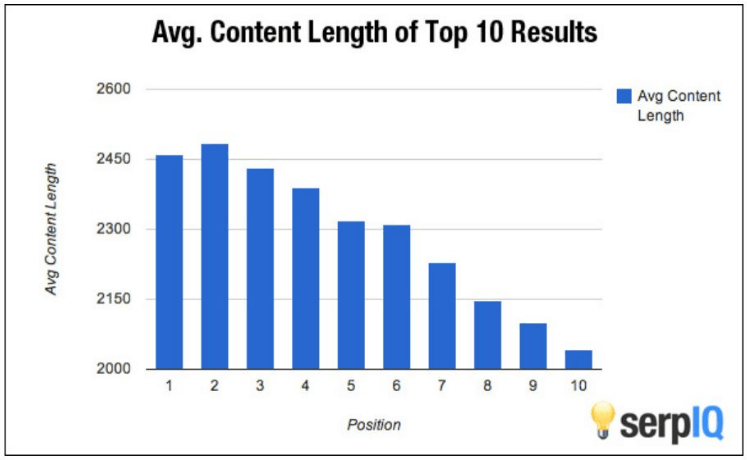Search engines such as Google and Bing crawl billions of pages in order to discover and organise the content that appears on Search Engine Results Pages (SERPs). They exist to understand content in order to give users on their SERP the most relevant results to answer the questions that users are asking. Understanding how search engines work is crucial for SEO because if your website can not be found then it will not show up on the SERP and users will not be able to find your website.
Customers are increasingly searching online for products and services and it is now more common for users to access a website through a search engine rather than just searching for a web address. It is therefore important to be ranking highly on the search engine results pages and in order to do this it is important to understand how search engines work so that you can optimise your website for SEO and get ranking on SERPs so that you can increase the amount of visitors to your site.
What Are Search Engines?
So firstly, let’s look at what a search engine actually is. A search engine is a software program that allows users to find information that they are looking for based on keywords or phrases. They are able to return results extremely quickly by constantly crawling websites and indexing every page that they find. They will then rank these websites based on their algorithms so that when users search for keywords, the most relevant and helpful websites will come up first.
Webmasters will need to optimise their SEO to help search engines recognise their website as helpful in order for it to rank when users are searching for a particular keyword.
One of the most popular search engines is Google and it has over 200 ranking factors in its algorithm. The algorithms are an extremely complex system which are used to retrieve data from its search index and deliver the best results for a query instantly. Google uses a combination of algorithms and makes thousands of changes to these algorithms every year. Most of these changes are very small so will go unnoticed, however, Google occasionally rolls out major updates that will significantly impact the SERP, so companies will need to alter their website in order to keep ranking on the SERP. It is important to keep up with all of Google’s algorithm updates so that you can keep your website optimised at all times. Below you will find a list of search ranking updates that Google released in 2022:
Source: Google
How Do Search Engines Work?
Search engines go through three main stages so that the best search results will be shown on the SERP, these three stages are crawling, indexing and ranking. Unfortunately, not all web pages will make it through each stage.
Search Engine Crawling:
Crawling is the process of finding out what web pages exist on the web. Google will use automated crawlers, known as spiders, to download text, images and videos from web pages that it has found on the internet. There is no registry of all web pages, so Google has to constantly look for new and updated pages and add them to it’s list of already known web pages, when Google finds a new web page, it is called URL discovery. Google will be able to discover new pages by following links from already known pages or they can be discovered if you submit a list of pages, known as a sitemap, for Google to crawl.
Google will not only just crawl new URLs but they will also crawl pages that are already known by Google to check for any updates that have been made to the page since they last crawled it. If they detect a change on the page then they will update the page on their index so that search results are up to date when users are searching for information. Google will use their algorithms to determine how often they crawl a page and how many pages on the website will be indexed. It is likely that pages that are often updated and changed will be crawled more frequently than pages that are rarely updated.
Search Engine Indexing:
After Google has crawled a page, it then tries to understand what the web page is actually about so that they are able to answer users’ queries. Google will analyse text, images and video files on the web page and then store that information in the Google index. The Google Index will contain billions of web pages on thousands of machines so that when a user searches for a query, the web pages are already indexed and they will be able to instantly return those web pages on the SERP.
The index will include all of the URLs that Google has discovered and indexed, and all of the relevant information about the content of the URLs. This will include the keywords of the page, telling Google what the page is about, the type of content that is included on the page, the freshness of the page – when it was last updated, and the previous user engagement of the page.
Google will not index all of the URLs that it finds and this can be due to a number of reasons:
- ➡️There could be signs on your web page telling Google not to index a particular page – this is where a noindex tag will be signalled on your web page – this is telling Google not to index this page even if there are links pointing towards it.
- ➡️Google could deem the page to be of low quality and they will therefore not index the page.
- ➡️The URL could return an error page, for example 404 not found. If this occurs then Google will not index the page.
If you want your web page to gain organic traffic, then it needs to be indexed by Google, so you need to make sure that you optimise your web page for SEO and ensure that none of the above things that we have talked about are happening. We will go into more detail about how to make your web pages more search engine friendly below.
Search Engine Ranking:
When a user searches for a keyword on Google, Google will look through their index for content that is relevant to that keyword in the hope that they will answer the user’s query. They will rank the content with the content that they think is the most relevant at the top, so, it is likely that the higher a website is ranking, the more relevant Google thinks that website is in relation to the keyword/ query.
This is where Google’s algorithms come into play. Search algorithms are systems that are used to rank data from the search index and deliver the most relevant web pages for a query. Google uses many ranking factors in its algorithms to ensure the most relevant web pages will be ranking highest on the SERPs:
- ➡️Backlinks – Backlinks are links from one web page to another and they are a very strong ranking factor. Having quality backlinks will tell Google that your web page is trustworthy and will give users accurate information. When it comes to backlinks it’s important to remember that quality always wins over quantity – one super relevant backlink which really showcases your expertise will be far more beneficial to the authority of your website than a number of backlinks from irrelevant sources
- ➡️Relevance of content – Google will analyse the content of a web page to assess whether it will contain the information that a user is searching for. One of the basic ways in which Google does this is by looking whether the content and the search term contain the same keywords. Beyond keywords, Google will analyse the content in other ways such as using aggregated and anonymised interaction data to see whether or not the content is relevant to the search term and whether other users have found it useful.
- ➡️Usability of web pages – Google will consider the usability of the web page and how easy it is to navigate. Aspects that they will look at include page speed, whether it is mobile and desktop friendly, and how quickly the content loads. The Core Web Vitals algorithm also plays into this and further reinforces how important on-page user experience is to Google.
When ranking web pages, Google will also use the user’s location, language, previous search history and what device they are using to personalise the results and make them more relevant to individual users.
How To Make Your Website Search Engine Friendly
From the above, you can see that Google prioritises certain factors in order to provide users with the best overall experience when they are using their search engine. This is great, as it means that you can optimise your website in order to allow Google to, firstly, crawl your web page, secondly, index your web page and thirdly, rank your web page. So, here are some points to make sure your website is search engine friendly:
- ➡️Create and submit a sitemap – submitting a sitemap will ensure Google crawls all of your web pages.
- ➡️Ensure your website is indexable
- ➡️Target the relevant keywords – when choosing your keywords, you should make sure that it is what users are searching for, you can find this out by looking at the volume of any keywords on AHrefs.
- ➡️Include your keywords in your content, headers and URLs – once you have chosen a keyword to target, you need to make sure that you include it in your website, use the keyword as part of your sentences but make sure you avoid keyword stuffing. You can also use semantics – look at keywords that are related to the keywords you are trying to focus on to add value and expertise
- ➡️Ensure your content is useful
- ➡️Ensure your website includes internal and external links
- ➡️Ensure your site loads fast
- ➡️Ensure your website is optimised for mobile and desktop browsers
Summary
To summarise, search engines exist to give users the most relevant information when they are searching for a query. Search engines will crawl and index your web pages and then rank them based on the key ranking factors.
By optimising the SEO on your web page, you will ensure that Google and other search engines can easily crawl your website, make sure that your content will be indexed for the right keywords, and finally it will help you to rank higher on search engine results pages and therefore gain more organic visitors to your site.














